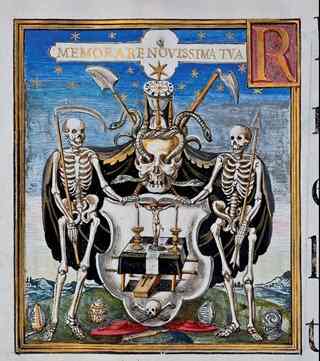On January 23, 2011, the only remaining set of codices from the Sacristy of the Sistine Chapel will be on display at the Meadows Museum as part of the exhibition The Lost Manuscripts from the Sistine Chapel: An Epic Journey from Rome to Toledo. Featuring 40 codices that range in date from the 11th to the 18th century, the collection represents some of the finest illuminations ever discovered, and follows the trajectory of an exciting and significant time at the Vatican and Sistine Chapel.
 The codices were looted from the Vatican by Napoleon’s armies and then rescued by the dynamic Archbishop of Toledo, Cardinal Francesco Antonio José de Lorenzana y Buitrón, who gave them to the Biblioteca Capitular de Toledo for safekeeping. For 200 years the codices all but disappeared from history, until the late 1990s when the Italian scholar Dr. Elena De Laurentiis saw a photograph of the Codices with the Barberini seal and traced their location to the Cathedral in Toledo. Since their discovery scholars have been cataloguing and studying the manuscripts, piecing together one of the most valuable collections of liturgical manuscripts in the world.
The codices were looted from the Vatican by Napoleon’s armies and then rescued by the dynamic Archbishop of Toledo, Cardinal Francesco Antonio José de Lorenzana y Buitrón, who gave them to the Biblioteca Capitular de Toledo for safekeeping. For 200 years the codices all but disappeared from history, until the late 1990s when the Italian scholar Dr. Elena De Laurentiis saw a photograph of the Codices with the Barberini seal and traced their location to the Cathedral in Toledo. Since their discovery scholars have been cataloguing and studying the manuscripts, piecing together one of the most valuable collections of liturgical manuscripts in the world.
“Many of the codices are in perfect condition, and they have provided unprecedented insight into one of the most vibrant historical time periods at the Vatican,” said Meadows Museum Director Mark Roglàn. “This is a very exciting discovery, and allows us to reconstruct one of the most important and valued pieces of papal heritage.”
The opening of The Lost Manuscripts from the Sistine Chapel at the Meadows Museum represents the first time that these ancient manuscripts will be on display in the U.S. Curated by Dr. De Laurentiis and fellow Italian scholar Emilia Anna Talamo, the exhibition will feature a broad range of liturgical writings used by the Catholic Church, including benedictionals, blessings, breviaries, epistolaries, evangelistaries, missals, and preparations for mass.
Though the manuscripts were undiscovered for years, the illustrations remain in pristine condition, and demonstrate some of the best preserved examples of the complex decorative schemes executed and influenced by master illuminators of the papal scriptorium, such as the French illuminator Vincent Raymond and the Italian illuminator Apollonio de’ Bonfratelli. Notable among the rediscovered manuscripts is the “Missal with Christmas Mass of Cardinal Antoniotto Pallavicini,” which dates to between 1503 and 1509, and is regarded as one of the richest and most exquisite codices from the Sistine Sacristy Collection.
Source: Art Daily [October 16, 2010]